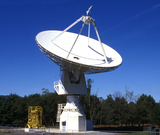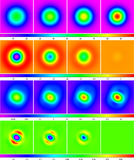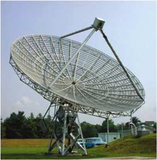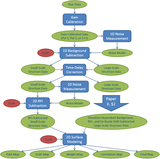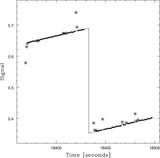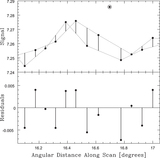Image Details
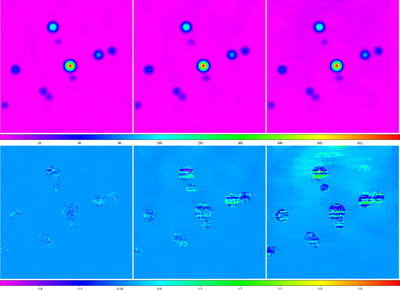
Caption: Figure 36.
Top row: data from the top row of Figure 19, corresponding to 6 (left column), 12 (middle column), and 24 (right column) beamwidth background-subtraction scales, RFI-subtracted, with a 0.95 beamwidth scale. Bottom row: data from the top row (1) minus the point sources from Figure 16 (residuals) and (2) minus the Gaussian random noise residuals from the top row of Figure 34 and the small-scale structure residuals from the middle row of Figure 35 (for greater clarity). Beyond where the sources intersect the noise level, en-route drift and long-duration RFI are effectively eliminated (Figure 20). Within these boundaries, the residuals are fairly consistent with the post-background-subtraction residuals of Figure 19; these are biased neither high nor low, and are noise level. Locally modeled surfaces (Section 1.2.1; see Section 3.7) have been applied for visualization only. Square-root and hyperbolic arcsine scalings are used in the top and bottom rows, respectively, to emphasize fainter structures.
Copyright and Terms & Conditions
© 2019. The American Astronomical Society. All rights reserved.


